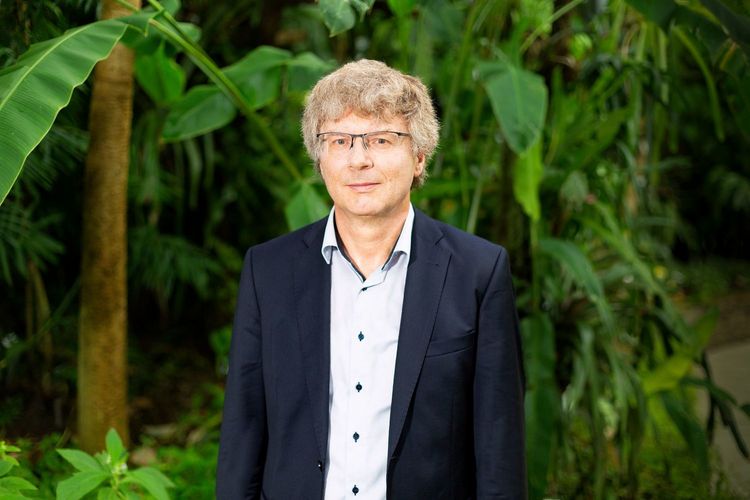The HALO aircraft is designed to reach high altitudes and carry out complex measurements in the atmosphere. With its state-of-the-art sensor technology, it is a major contributor to research into global environmental issues. Leipzig’s development of the instrumentation is part of a broader DFG initiative to significantly increase HALO’s scientific payload. The funding will be available for 5 years from January 2024. In addition to Leipzig University, the universities in Frankfurt, Hamburg and Cologne are also involved in projects.
Studying the Earth system with a flying high-tech laboratory
HALO is not just an aircraft, it is a flying high-tech laboratory that opens up new perspectives on the study of the Earth system. Since its first test flight in 2009, it has taken off regularly not only to explore the Earth’s atmosphere and properties, but also to deepen our understanding of our planet by answering fundamental research questions and to shape a joint, sustainable future in the face of climate change. Besides cutting-edge research by the best minds in atmospheric and geophysical science, this requires technical brilliance: the airborne measurement platform is equipped with sophisticated and highly specialised in-situ and remote sensing instruments and boasts exceptional flight capabilities (maximum range = 8,000 kilometres, instrument payload = up to 3 tonnes, maximum flight altitude = 15 kilometres).
Technological innovations enable new research ideas
“To make the most of HALO’s outstanding capabilities, it is essential to continually optimise the existing instrumentation and integrate innovative new instruments into the aircraft’s scientific equipment. It is only thanks to the DFG funding for our two Leipzig proposals as part of the broader equipment programme that we and the other participating institutions will be able to finance the very costly expansion of the instrumentation,” says atmospheric researcher Manfred Wendisch, who has regularly been on board HALO with his own research projects since 2010. Without such external funding, universities in particular would not have the necessary resources to develop and certify the additional instruments for HALO, which will ultimately enable novel research ideas for future missions.
Specifically, Leipzig University is supporting two projects:
- Two new four-metre-long wing canisters will be built, adapted and certified to accommodate a potential payload of around 200 kilograms. Installed underneath HALO’s two wings, they will provide space for comparatively large and heavy instruments for future measurement campaigns. Planned measurement campaigns around the world, including cloud and aerosol studies as well as investigations for climate research, will benefit from their availability.
- A new measuring device will be designed, built and certified. Manfred Wendisch explains: “It is a hemispherical and spectral imaging camera array system for the determination of angle-resolved radiation data. This will, for example, allow us to study the radiation energy budget, or help improve and validate remote sensing techniques in frequency bands other than those currently used to characterise clouds, aerosols and the Earth’s surface. This untapped information will also be of increasing interest for future space satellite missions.” In the past, HALO measurements have often been combined with surveys by other aircraft or from the ground, as well as satellite data and modelling. Extending the technical capabilities of the research aircraft should make it possible to validate satellite measurements and carry out large-scale observations of the Earth system in the future.
Solutions for climate change: Looking to the future
Climate change is one of the greatest challenges of our time. Research using HALO contributes to a better understanding of atmospheric and Earth system processes, as well as climate change – ultimately helping to answer some of the most pressing questions facing our planet. By precisely monitoring greenhouse gases, air composition and particle distribution, the high-tech laboratory complex provides essential data that researchers around the world use to improve models, refine predictions and ultimately develop collaborative solutions to climate change.
The Breathing Nature research project, with which Leipzig University has applied for a Cluster of Excellence as part of the Excellence Strategy of the German federal and state governments and in which meteorologist Manfred Wendisch is involved, includes HALO measurement campaigns in the Amazon and the Canadian Arctic. A look ahead to HALO’s future therefore also promises even greater heights for excellent researchers at Leipzig University.
About HALO
The High Altitude and Long Range (HALO) research aircraft is a joint initiative by German environment and climate research bodies. HALO is funded by contributions from the Federal Ministry of Education and Research (Bundesministerium für Bildung und Forschung; BMBF), the German Research Foundation (Deutsche Forschungsgemeinschaft; DFG), the Helmholtz Association of German Research Centers (Helmholtz-Gemeinschaft Deutscher Forschungszentren), the Max Planck Society (Max-Planck-Gesellschaft; MPG), the Leibniz Association (Leibniz-Gemeinschaft), the Free State of Bavaria (Freistaat Bayern), the Karlsruhe Institute of Technology (KIT), Forschungszentrum Jülich and the German Aerospace Center (Deutsches Zentrum für Luft- und Raumfahrt; DLR). DLR is both the owner and operator of the aircraft.
Translation: Matthew Rockey






























































![Photo: DLR (CC-BY 3.0) [Translate to English:]](/fileadmin/_processed_/c/7/csm_pic_20170310140551_fcb0a2c0f0_48baebc1eb.jpg)
